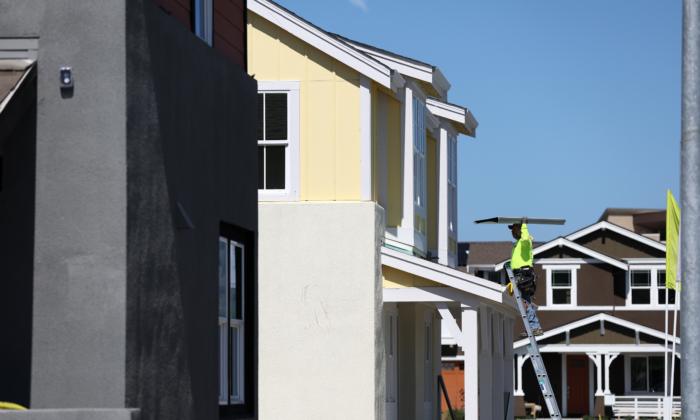Mortgage rates hit 8 percent on Oct. 18, hammering affordability for homebuyers and sending loan demand plummeting to a 28-year low.
Although the outlet provided the data without commentary, mortgage finance firm Freddie Mac said last week—when it announced that rates had risen to 7.57 percent—that the upward moves in loan rates were driven by market gyrations and geopolitical turbulence. Freddie Mac normally releases mortgage rate updates on a weekly basis.
“For the fifth consecutive week, mortgage rates rose as ongoing market and geopolitical uncertainty continues to increase,” Sam Khater, Freddie Mac’s chief economist, said in a statement on Oct. 12.
While warning of clouds on the horizon of consumer spending, “extremely” high government debt levels, and the largest peacetime fiscal deficits in U.S. history, Mr. Dimon said in a statement last week that he sees a growing risk that inflation stays high and that the Federal Reserve will raise interest rates even higher.
Faced with decades-high inflation, the U.S. central bank embarked on a rapid interest rate hiking cycle, going from near zero in March 2022 to within the current range of 5.25–5.5 percent. And Fed officials have warned that more hikes could be in store because inflation remains stubbornly high.
Mortgage Demand at 28-Year Low
With rates now rising to 8 percent, the mortgage demand slump has deepened despite an underlying demand for affordable housing.“Both purchase and refinance applications declined, driven by larger drops for conventional applications,” Joel Kan, MBA’s deputy chief economist, said.
“Purchase applications were 21 percent lower than the same week last year, as homebuying activity continues to pull back given reduced purchasing power from higher rates and the ongoing lack of available inventory.”
Borrowing costs look unlikely to retreat in the near term, unless a sudden directional shift takes place in bond markets.
“Less than 3 years ago, the average rate on a 30-year mortgage was just 2.6%. The median monthly payment for homebuyers will cross $3,000 this month.
No One Wants to Sell, No One Wants to Buy

Economists polled by Reuters expect that the data due on Oct. 19 from the National Association of Realtors will show that sales of previously owned houses in September fell for a fourth straight month—the slowest sales rate since 2010.
With home loan borrowing costs at multi-decade highs and many potential home sellers having locked in their mortgages at much lower rates, there are dual disincentives pushing down sales volumes.
“No one wants to sell their property, no one wants to buy a property,” Glenn Kelman, CEO of housing data provider Redfin, told Yahoo Finance in an interview. “So sales volume is going to stay low for the foreseeable future.”
Several housing-industry lobby groups have urged Federal Reserve Chair Jerome Powell not to raise interest rates any further—and to refrain from selling mortgage bonds until real estate financing becomes more stable.
“We urge the Fed to take these simple steps to ensure that this sector does not precipitate the hard landing the Fed has tried so hard to avoid,” the National Association of Realtors, Mortgage Bankers Association, and National Association of Home Builders wrote in a letter to Mr. Powell on Oct. 9.
The latest government data on inflation show that the Consumer Price Index rose by 3.7 percent in September, matching August’s pace.
Although that’s down from a recent peak of 9.1 percent in June 2022 and lower than the 8.2 percent pace a year ago, it’s still well above the Fed’s inflation target of 2 percent.







